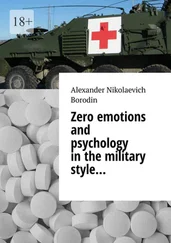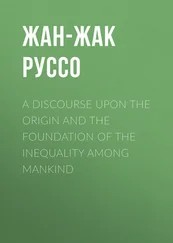The present study was financially supported by a grant (ID No: FFI2013-47792-C2-2-P). This chapter is part of the long-term research Project ‘EMOtion and language at work’: The discursive emotive/evaluative FUNction in different texts and contexts within corporate and institutional work: PROject PERsuasion (EMOFUN-DETT: PROPER).
References
Bamford, Julia (2007). “Evaluating the positive: Evaluation and persuasive discourse in business presentations”. In Bamford, Julia and Rita Salvi (eds.). Business Discourse: Language at Work . Roma: Aracne Editrice, pp. 135-155.
Blutner, Reinhard (1998). “Lexical pragmatics”. Journal of Semantics 15, 115–162.
Blutner, Reinhard (2004). “Pragmatics and the lexicon”. In Horn, Laurence, H. and Gregory Ward (eds.). The Handbook of Pragmatics . Oxford: Blackwell, pp. 488–514.
Cabrejas-Peñuelas, Ana B. and Mercedes Díez-Prados (2013). “The evaluative function of cohesive devices in three political texts”. In Kecskes, Istvan and Jesús Romero-Trillo (eds.). Research Trends in Intercultural Pragmatics . Berlin: De Gruyter Mouton, pp. 317-341.
Cabrejas-Peñuelas, Ana B. and Mercedes Díez-Prados (2014). “Positive Self-evaluation versus Negative Other-evaluation in the Political Genre or Pre-election Debates”. Discourse & Society 25 (2), 159-185.
Cockcroft, Robert et al. (2014). Persuading People. An Introduction to Rhetoric . New York: Palgrave Macmillan.
Díez-Prados, Mercedes (2016). “The use of metaphor and evaluation as discourse strategies in pre-electoral debates: Just about winning votes”. In Romano, Manuela and Dolores Porto (eds.). Exploring Discourse Strategies in Social and Cognitive Interaction . Amsterdam/Philadelphia: John Benjamins Publishing Co, pp. 215-244.
Díez-Prados, Mercedes, and Ana B. Cabrejas-Peñuelas (2012). “Cohesion in American political rhetoric: The Gettysburg Address, I have a dream and Obama’s Inaugural Address ”. Estudios Ingleses de la Universidad Complutense 20, 37-60.
Gass, Robert H. and John S. Seiter (2015). Social Influence and Compliance Gaining . London: Routledge.
García-Gómez, Antonio (2007). Habla Conflictiva como Acción Social. Discurso y Cognición. Oviedo: Septem Ediciones.
Kolaiti, Patricia, and Deirdre Wilson (2014). “Corpus Analysis and Lexical Pragmatics: An Overview”. International Review of Pragmatics 6, 211-239.
Kress, Gunther (2000). “Multimodality”. In Gunther Kress (ed.). Multiliteracies: Literacy learning and the design of social futures . London: Routledge, pp. ed. by, 182-202.
Kress, Gunther (2009). Multimodality: A social semiotic approach to contemporary communication . London: Routledge.
Lakhani, David (2005). Persuasion: The Art of Getting What You Want . New Jersey: John Wiley & Sons, Inc.
Lakoff, Robin (1982). “Persuasive discourse and ordinary conversation, with examples from advertising”. In Deborah Tannen (ed.) Analyzing discourse: Text and Talk . Georgetown: Georgetown University Press, pp. 25-42
Levinson, Stephen C. (2000). Presumptive Meanings: The Theory of Generalized Conversational Implicature . Cambridge: Cambridge University Press.
Louw, Bill (1993). “Irony in the text or insincerity in the writer? The diagnostic potential of semantic prosodies”. In Baker, Mona and Gill Francis and Elena Tognini-Bonelli (eds.). Text & Technology: In honour of John Sinclair . Amsterdam/ Philadelphia: John Benjamins Publishing Co, pp. 157-176.
Martin, Fiona (2006). “New media, new audiences”. In Cunningham, Stuart and Graeme Turner (ed.). The Media and Communications in Australia . Australia: Allen and Unwin, pp. 315-328.
Martin, James R. and Peter R. R. White (2005). The Language of Evaluation: Appraisal in English . London: Palgrave Macmillan.
Peel, Ellen (2002). Politics, Persuasion, and Pragmatism: A Rhetoric of Feminist Utopian Fiction. Columbus: Ohio State University Press.
Pishwa, Hanna (2009). Language and Social Cognition. Expression of the Social Mind . Berlin / New York, Mouton de Gruyter.
Pullman, George (2013). Persuasion. History, Theory, Practice . Indianapolis: Hackett Publishing Co.
Santiago Guervós, Javier de (2012). Principios de Comunicación Persuasiva. Madrid: Arco Libros, S.L.
Sinclair, John (2000). “Lexical Grammar”. Naujoji Metodologija 24, 191-203.
Sperber, Dan and Deirdre Wilson (1986). Relevance: Communication and Cognition . Oxford: Blackwell.
Taillard, Marie-Odile (2000). “Persuasive Communication: The case of marketing”. Working Papers in Linguistics 12, 145-172.
ZIatev, Jordan (2007). Embodiment, language and mimesis. In Ziemke, Tom, Jordan Zlatev and Roslyn M. Frank (eds.). Body, Language and Mind. Vol. 1: Embodiment . Berlin: Mouton de Gruyter, pp. 297-337.
PART 1
A CROSS-LINGUISTIC APPROACH
1
Comparing Engagement in Non-fictional Texts: An English-Spanish Contrastive Study of Argumentative and Expository Texts from a Parallel Corpus
MARTA CARRETERO
Universidad Complutense de Madrid
Abstract
Following the Appraisal framework, this paper explores the role of Engagement in 20 argumentative and 20 expository texts from MULTINOT, an English-Spanish parallel corpus. The realisations of the different subcategories of Engagement were submitted to quantitative analysis, and the main results are as follows: firstly, the distribution of Engagement devices in the English and Spanish texts displays more differences than expected, which hints that these devices were not always faithfully translated; secondly, the comparison of the original texts in both languages shows distributional differences in the more delicate categories of Engagement but not in its main categories; and thirdly, distributional dissimilarities were also found between the argumentative and expository texts, largely due to the informative purpose of the latter and the persuasive purpose of the former. These results together provide evidence of the close relationship between persuasion and evaluation in language.
Keywords: Appraisal, Engagement, argumentative texts, expository texts, English-Spanish contrastive analysis, UAM Corpus Tool.
1 Introduction
Following the Appraisal system of analysis of evaluative language, developed within Systemic-Functional Linguistics (Martin and White 2005; White 2002, 2015), this paper addresses the linguistic expression of Engagement, one of the three major subcategories of Appraisal, which concerns the relation between what is being communicated by a speaker or writer and other actual or potential viewpoints. The texts selected for analysis are English and Spanish non-fictional texts of two types, namely argumentative and expository, extracted from the MULTINOT corpus, a comparable and parallel corpus (described in Section 4). 1Both kinds of texts deal with facts and information, but differ in that argumentative texts intend to persuade the reader of the validity of a given position on a certain issue. The research aims to gain further insight into how the distribution of different kinds of Engagement expressions is influenced by the language and the main purpose of the texts.
The paper is structured as follows: Section 2, which describes the theoretical framework, contains a brief description of the Appraisal system and a more detailed description of the system of Engagement. Section 3states the research hypotheses. Section 4describes the MULTINOT corpus and the method used for analysing the data. Section 5discusses a number of unclear cases, some of which might be analysed as belonging to two different categories of Engagement, while others display an overlap of Engagement with Attitude or Graduation; the decisions taken regarding the analysis in these cases are made explicit. Section 6specifies and discusses the results of the quantitative analysis. Section 7contains a final discussion and concluding remarks.
Читать дальше












